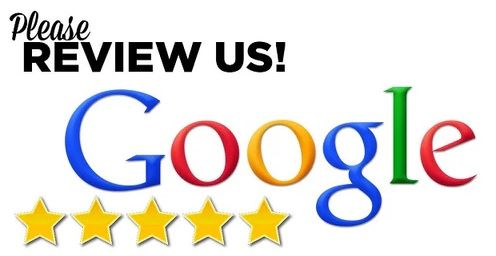Reversing in to a parking bay
Introduction
At this stage of your training your:-
- P.O.M routine (moving off)
- Steering to a safe driving position and pulling up on the left
- Clutch control
- Co-ordination of foot controls including gear changing up and down
- M.S.M routine at junctions, moving off and stopping
- Adequate clearance around stationary vehicles and slower moving vehicle (cyclists and pedestrians)
- T, Y junctions, crossroads including more complex junctions (traffic lights and roundabouts) and timing of gaps right
should be improving and getting more (independent) client-centred
Agreed lesson is covering :-
Drive into a parking bay exercise in a car park then reverse back out of it to drive on.
Agree level of instruction on the way to the training location
Intervention
On the drive to the reversing location you will assessed on the skills and drills from all other lesson briefs:-
Agree if any of the lesson is going to be a instructor-lead-lesson or a client-centred-lesson and if it is client-lead agree if the instructor has to intervein verbally, take control of the training vehicle by ether using the dual control or take the wheel the lesson plan may need to be changed until the fault is fixed.
F.I.S.H
- Fault
- Implication
- Solution
- Help
Lesson aims and strategies
The aim of today’s lesson is to incorporate the Look, Asses, Decide and Act and Mirror, Signal, Position, Speed, Gear routine's when driving into a parking space. Previous reversing (straight line reverse ) would of already helped you to develop your clutch control. remember to move the clutch to the biting point then move the clutch pedal a £1 thickness up and down so you keep full control throughout the manoeuvre.

Risk responsibility objective's
On the way to the training location you and your instructor will agree the level off support from your instructor:-
- Full talk through
- Prompt
- Independent.
This is important to ensure that the instructor and student understands who has the main responsibility on the control of the training vehicle on the set lesson plan.
Your level of instruction will be given by your instructor to a level to suit you from full talk through then reducing your support to either prompt or independent.
Please note from November 2017 the DVSA changed the format of the driving test changed, the reversing around corners and the turn in the road exercises has been replace with parking up on the right hand side of the road and reverse back 2 too 3 car length and driving into a parking bay then reverse back out of it.
However you will still be taught learnt the reversing around corners and the turn in the road exercises manoeuvres at a lower structured level from your driving instructor.
Why still teach the turn in the road and reversing around a corner?
Why just think if you are on your driving test and you go the wrong way (like a dead end road) and you was unable to turn your training vehicle around safely.....
The turn in the road exercise will be taught to you at a certain point in your training as all driving instructors alter lesson briefing to suit all students needs, however all lesson briefs are agreed at the end of each lesson lesson, so this will give you the opportunity to read the relevant brief (gestalt).
Lesson brief
It is better to reverse into a parking space as you will find it easier to drive out, however if this is not possible the next best thing will be to drive into a parking bay then reverse out once you’re ready to leave. The issue you will have when revering out of a parking space is your rear windows could have misted up or even your vehicle could be full of shopping obscuring your view so reversing out is a harder task.
PLESE NOTE THAT SOME CAR PARKS CAN BE ONE WAY SYSTEMS SO PLEASE LOOK OUT FOR THE SIGNS.
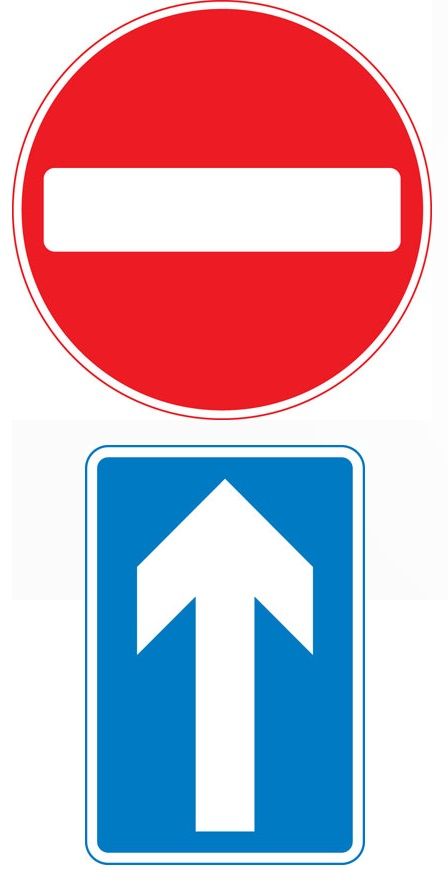
Drive into a parking bay exercise on the left and the right using 1st gear then reverse out of the parking bay using reverse gear.
Drive into a bay

Then reverse back out
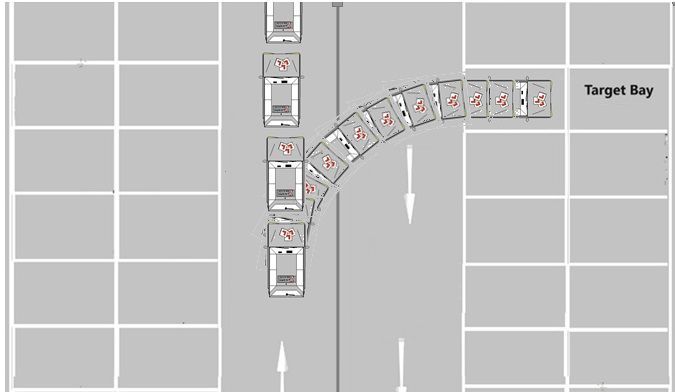
Location
Once you have got to the training location (carpark) you will be asked to park up on the left hand side close to the bay on your Nearside (passenger side).
Driving into a parking bay on the right
This briefing breaks down how to drive into a bay on the right hand side and on your driving lesson your instructor will coach you with techniques to drive into the right and the left and how to safely reverse out to drive on after the manoeuvrer.
Correct starting positioning
Start with a wide positioning as this will give you more space to manoeuvrer forward into the targeted bay. It will also reduce the risk of your front end of your training vehicle from cutting into the bay ether side of the one you are driving into.
Risk management
Just imagine you are going to drive into a parking bay/space in a busy carpark and there is only one space left. The closer you start to the target bay the bigger the risk of shaving a vehicle that is in the bay next to your target bay.
Correct start position

Incorrect start position

Incorrect position (too close)
Start the manoeuvrer as wide as safely possible to the left (when driving in to the right) gives you a safer swing in to the target bay with your front end of your training vehicle.
When you start to closer to the right hand side bays the more your training vehicle will encroach into the next bay on your nearside parking space and potentially going over the white lane, this will increase the risk of hitting a parked blue vehicle that is parked next to your bay (diagram above).
M.S.M routine
On the approach to start the manoeuvrer ensure you do your mirror, signal manoeuvrer routine to ensure you know what is behind you and give the vehicles behind the relevant information of your intension.
Reference point to reverse into a parking bay
Once you have positioned your training vehicle in a wide position, you now need to find a reference point to help you drive into the bay you are intending to drive into. (You instructor will give you a reference point so you ae accurate to drive into the bay (explained more on your lesson).
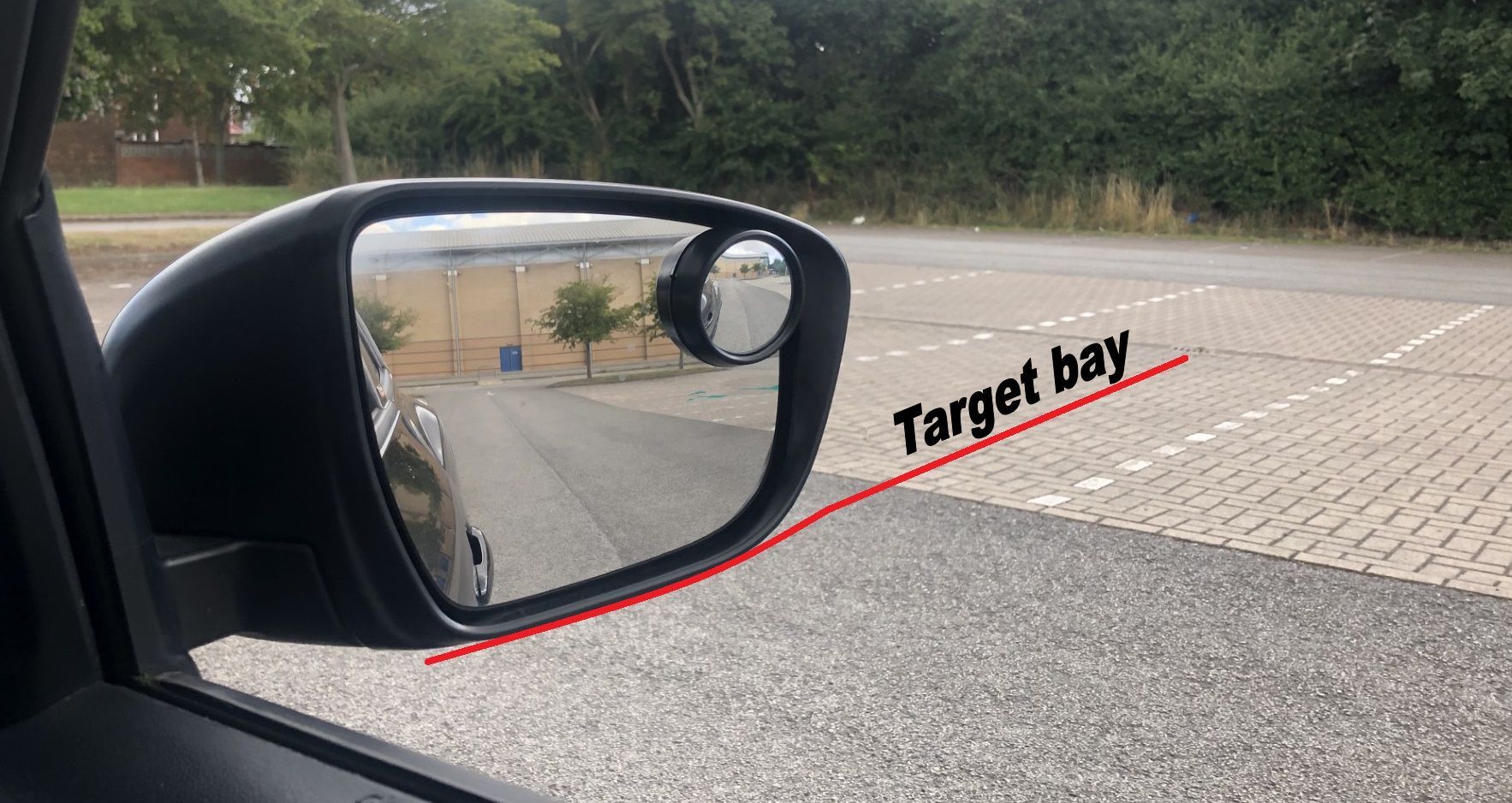
Reference point
The objective is to achieve the correct reference point so your training vehicle's front end up between line 1 and 2. Once you have driven in.
How much steering will you need?

Use of steering
Just like all the other set reverse manoeuvrer's you need to briskly move the steering wheel with accurate clutch control will guarantee success.
Remember quick hands and slow/controlled foot pedals (Fast steering and good clutch control) at the correct point of turn.
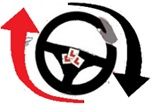
Camber of the road.
Most roads have cambers and carparks are no different and the extra issue you may have is there could be an up or down hill slopes that you could be challenged with, however with you already trained on hill starts this should not be a problem on this reverse manoeuvre. Just remember to keep control of your training vehicle just using good clutch control (£1 up and down from the biting point) and always demonstrate good clutch control throughout the manoeuvrer.

P.O.M
Please note your objective is once you have been briefed on the manoeuvrer is then to progress and drive straight into the bay without stopping and starting.
Prepare
Clutch down, select 1st gear find the biting point

Observations
Normal 6 point check so go from your left shoulder to the right shoulder.

Move
Once you have assessed it is safe to start the manoeuvre (when no vehicles are driving towards you), release your hand brake and start to steer full lock to the right.

Use of brakes
If any vehicle approach your front end or the rear of your training vehicle indicate your intension and use your brakes to warn the vehicle you have seen them and stopped.
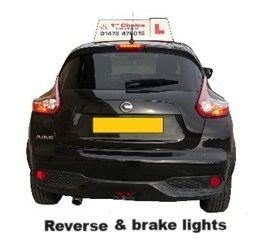
Hand(s) position
When reversing you would usually hold the steering wheel with the right hand at the 12 or 1 o’clock position and the left hand at the 6/7 o’clock position. This will hopefully keep the vehicle to stay in a straight line when you are looking out of your rear window when reversing.
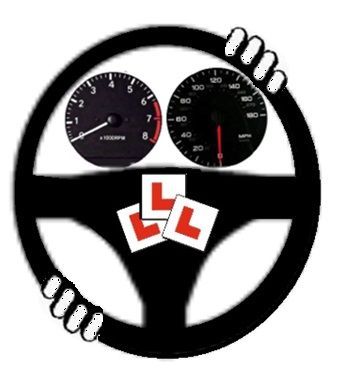
Use of seat belt.
By law you are allowed to remove your seatbelt, however it’s not practical as you could forget to put it back on or if you need to abandon your manoeuvre because a vehicle has come behind you. You will need to put it back on before you drive forward.

Releasing your seatbelt can help, however if you shuffle around in your seat you can look through the rear window by looking over your left shoulder a lot easier.
All around observations
Constantly for look around for for any dangers and give way to any approaching vehicles, cyclists and pedestrians on all 4 sides of your training vehicle (that's on your left, right in front and behind you). Not forgetting road users emerging or wanting to leave another parking space.
When reversing who do you give way too?
This could help when to stop when obstacles are coming towards you:-
- Motor vehicle 6 car lengths from you.
- Cycle about 3 cars lengths from you.
- Pedestrians 1.5 car lengths from you.
Reference points (so accurate)
As already mentioned your reference point will be placing the bottom part of your wing mirror roughly in the middle of the bay you intend to drive into (this is when you are driving on the right hand side of the car park. On the left hand side your reference point will be on a different point on the passengers wing mirror) reference points will be discussed more on lesson.
Please note each student will have a different reference point due to students different heights and seat position.

Starting the manoeuvre
Once you have your a wide starting point and your P.O.T, prepare your vehicle to reverse into the chosen parking bay.
Prepare - Clutch down, reverse gear and find the biting point.

Observations - Normal 6 point check so go from your left shoulder to the right shoulder.

Move - Once you have assessed it is safe to start the manoeuvre (when no vehicles are driving towards you), release your hand brake and start to steer full lock to the right.

Steering
With this manoeuvre you will need to briskly move the steering wheel with accurate clutch control, this will guarantee success.
The key to this manoeuvre is quick hands and slow feet (Fast steering and good clutch control).
Remember to achieve best clutch control is to move your clutch £1 up and down for the biting point position.
When to straighten your front wheels?
Drive forward and start to straighten the steering wheel when your tuition vehicle is becoming parallel to the bay lines. In the below picture your instructor will have a reference point in the bottom of the front window. Once you have this reference point start to straighten your front wheels by turning back your steering wheel.
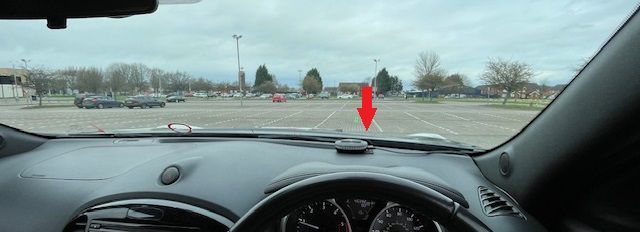
How far to go forward into the bay?
Use your wing mirrors to now where the front end of your training vehicle is, sit both your wing mirrors in the dividing line of the bays.
Going to far may result in colliding into a vehicle in front of you.

Risk assessment
Once you have full lock on your training vehicles front end will start to move across the road so ensure there are no hazards in your way - Remember YOU will need to stop for vehicles, cyclists and Pedestrians approaching your training vehicle.
Dealing with other road users
While driving in and also reversing out of the parking bay be prepared to stop or even abandon the manoeuvre if this is the best risk assessment.
Once exercise is completed you will practice driving in to the parking bay a few times to work on the control, accuracy and observations needed for this manoeuvrer.
Make the training vehicle safe
Once you are happy with your parked position make your training vehicle safe.
Apply your hand brake and gear into neutral.

Once you have successfully parked the your training vehicle between the lane you will then be asked to reverse back out.
Reversing out of the bay.
Once you have driven into the bay you now need to reverse out of it safely.
Prepare - Clutch down, reverse gear and find the biting point.
Set as much gas as is needed for the gradient of the carpark.
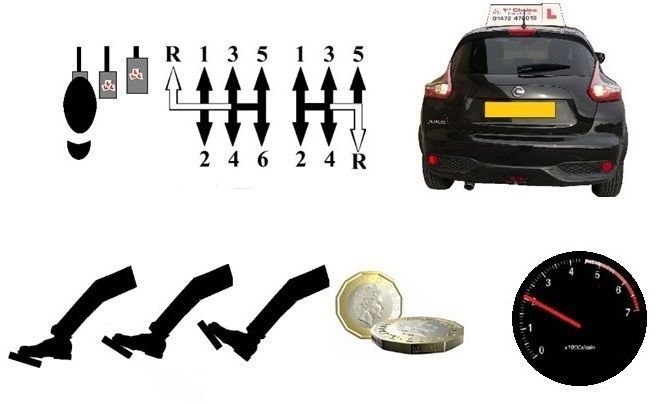
Observations
Reverse the 6 point check so go from your right shoulder to the left shoulder, so you’re looking the correct way (over your left shoulder)

Move
When no vehicles are driving towards you (that's both sides of your vehicle) release your handbrake, steer and start to reverse back SLOWLY (crawling pace).

Reverse out
Remember when reversing out ensure you maintain all round awareness/observations and ensure clutch control is maintained when reversing out (as it is when you drive into the bay).
Reverse back a safe distance
Slowly (crawling pace) reverse out of the bay until your driver’s wing mirrors is out the parking bay you are exiting. This will ensure the front end of your vehicle will not hit a potential car that is parked next to you.
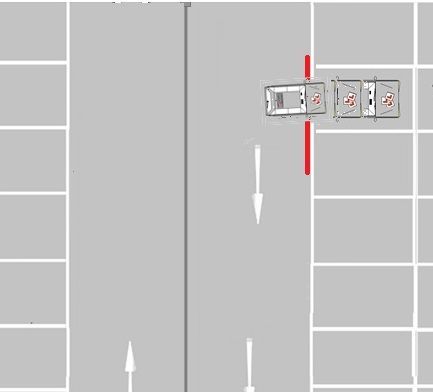
Apply full lock
At this point start to turn your steering wheel full lock (using the pull push method) to the right maintaining observations over your left shoulder looking out of the rear window and occasionally look all around your for vehicles, cyclists always be on the lookout for impatient people wanting to rush past you, stop and let them pass you (reference points will be discussed on your lesson).

The bays and parked cars behind
Ensure you do not reverse back to far before you start to turn the steering wheel (right) as if you have anu parked vehicles behind you you could quiet easily reverse back in to them.
Risk management is have the above point of turn and continually use all around observations throughout the manoeuvrer.

Reverse back
Once you are at in the position in the diagram, start to straighten up your wheels to make the next stage of driving forward easier.
Please not this is not essential so if you do not do it is not wrong its just makes the next stage easier.

Make the vehicle safe
Apply your handbrake and gear into neutral

Preparing, observing and manoeuvre
Once your far enough back P.O.M to go forward and drive on when it’s safe to continue.
Prepare
Clutch down, select 1st gear find the biting point

Observations
Normal 6 point check so go from your left shoulder to the right shoulder.

Move
Once you have assessed it is safe to start the manoeuvre (when no vehicles are driving towards you), release your hand brake and start to steer to make progress ahead and drive on.
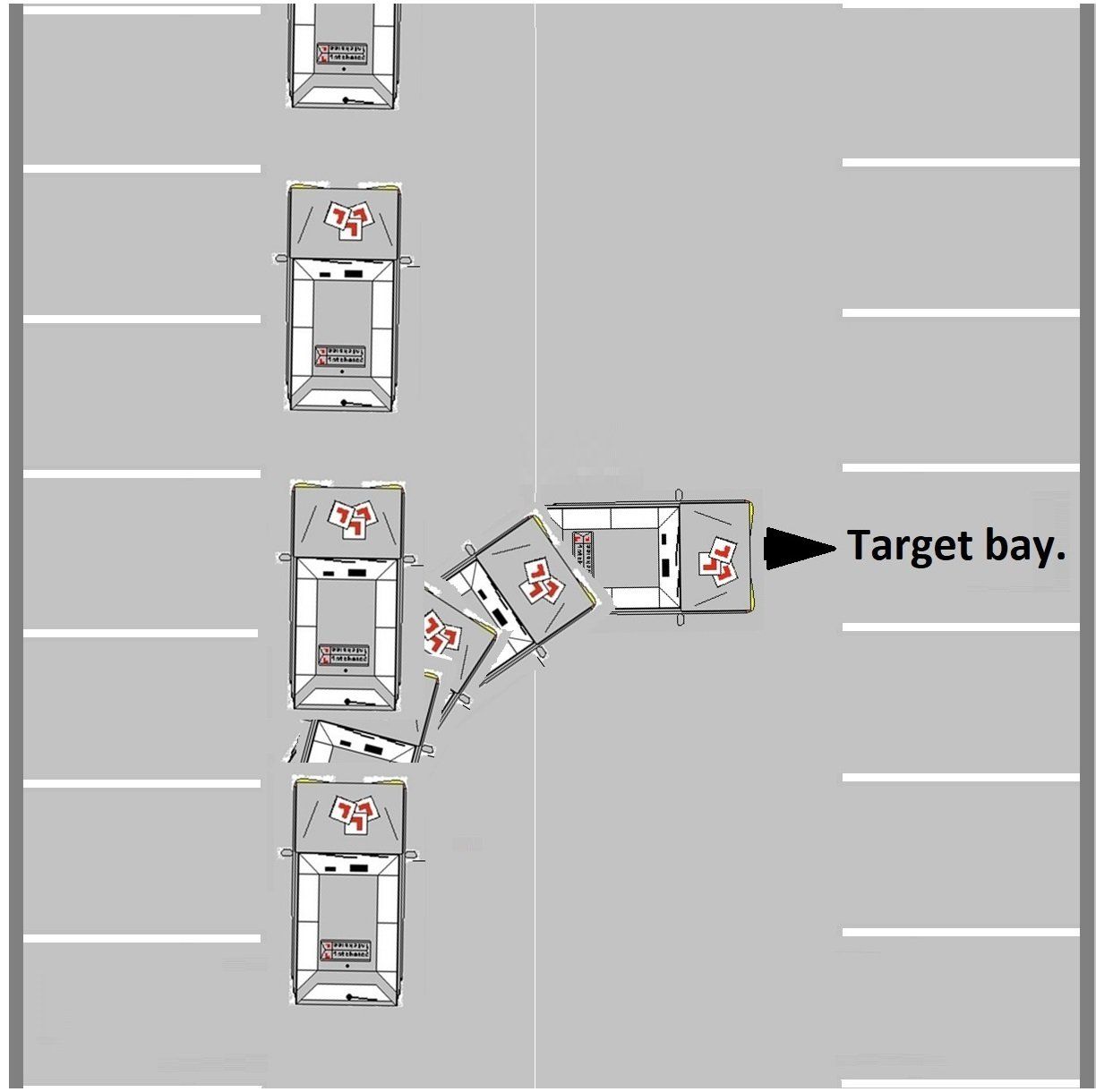
Driving into a left hand bay.
Use the same technics as above but just reverse the position of your vehicle, steering and observations.
Reflect & Review
So remember your instructor is there to HELP you so on your driving lesson if you have any uncertainties or need anything rewording or recapping to make things any clearer, just ask.
Your training Vehicle is fitted with dual Controls and if necessary could be used throughout your lesson if needed. These are here for your safety so we can step in to keep you safe.
So don’t worry if the issues arise we will aid & guide you VIRBALLY or PHYSICALLY and we can go over the situation if happens to correct if in the future.
Risk management
Physical control of your vehicle
The aim is for you the student to have full control of this lesson with previous lessons and have full talk through on the new topic and then reducing the support throughout with you decision making as best you can.
Your instructor’s job is to analyse any faults or new faults that may accrue in this lesson and put them right.
Talk about any issues if the situations happen on the driving lesson and put issues right.
Fault identification.
Fault analysis.
Remedial action.
Level of instruction on your lesson
Full talk through.
Prompt.
Independent.
End of lesson
Feed back at the end of your lesson.
Student’s responsibility of lesson and improvements.
Plan for the next lesson.
